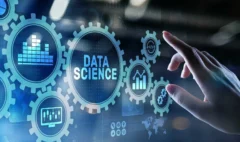Predictive Analytics
May 14, 2021 2021-05-14 10:09Predictive Analytics
Predictive Analytics
Predictive analytics uses analytics techniques to evaluate past and current data to forecast trends and behaviors, identify opportunities and anticipate risks. Sophisticated predictive analytics methods include machine learning, data mining, statistical modeling and artificial intelligence.
How does predictive analytics work?
Once an organization’s analysts find a pattern in data, they will design models to get relationships between various factors. These models allow analysts to assess whether a group of conditions put together can cause a benefit or risk. this is often how predictive analysis can guide informed decision-making across various categories of supply chain and procurement events. Predictive analytics may be a task any business can perform as long because it stays committed to investing the required time and funds within the project. Once a model is in situ , your organization must maintain it with continued analysis.
How to apply the predictive analytics process
- Project Definition: the primary step is to spot the result of the project, the deliverables, business objectives, and supported which the info collection are going to be poised.
- Data Collection: subsequent step is to gather data from multiple sources, to possess an image of the varied customer interactions as one view item.
- Analysis: Further, the info is inspected, cleansed, transformed, and modeled to get if it provides useful information and helps to conclude.
- Statistics: this permits to validate if the findings, assumptions, and hypothesis are admirable to travel ahead and test them employing a statistical model.
- Modeling: It helps in creating an error-free predictive model about the longer term that gives options to settle on the simplest option which will be sorted through multi-model evaluation.
- Deployment: Predictive model deployment provides an choice to create and deploy the analytics results into productive decision-making. It also helps to get results, reports, and other metrics.
- Monitoring: Models that are prepared are further tracked to regulate and check for performance conformance to make sure that the specified results are acquired needless to say .
Why is predictive analysis important?
Predictive analysis allows organizations to form more reliable and accurate previsions. Therefore, it’ll enable them to save lots of money or generate more profit.
Here are another benefits of predictive analysis:
- It helps professionals forecast their future needs: As an example , retailers use it to forecast their inventory, or hotels use it to predict the amount of rooms that clients will book during a specific season. That way, they will prepare and maximize their sales while controlling their costs. After applying predictive analysis, they will not buy an excessive amount of merchandise or hire an excessive amount of staff.
- It improves the customer experience: Because of predictive analytics, organizations can optimize their marketing campaigns. By proposing a product that the customer showed interest in, they increase the acquisition rate, retain existing customers and attract new ones.
- It helps in detecting criminal behaviors: Identifying non-habitual behaviors can uncover fraud detection, cyber-attacks or corporate spying.
Applications of Predictive Analytics
-
Marketing campaign optimization and customer relationship management: Marketers apply this to data and achieve customer relationship management goals. they will analyze the customer’s life cycle and manage the connection at each stage — acquisition of product or service, relationship, retain or get back . With the results, they will build efficient marketing campaigns. It also helps in marketing — to spot what version of the merchandise and what quite commercial and channel will reach a selected sort of customer.
-
Decision support within the healthcare sector: It allows healthcare professionals to project the risks for a patient to develop a specific condition. It guides the medical decision. Medical analytics platforms use genetics, clinical information, multi-source imaging and demographic data to make a choice network for medical practitioners.
-
Risk management: Finance sector uses predictive analysis to manage risk in financial markets. Professionals during this industry study trends to select the simplest investment products supported past performances and therefore the right time to shop for or sell their financial products.
-
Project management: Project managers predict the possible scenarios and make decisions supported the results of analytics reports.
-
Risk reduction: Health insurance providers use predictive analytics to look at past medical claims data and lab or pharmacy records. The results of their analyses allow them to predict the probabilities of illness and therefore the probable future cost of a client.
Job Role in Predictive Analytics
- Project manager: Project managers use analytics tools to trace their efficiency, manage and follow up a team’s progress and increase productivity by changing processes.
- Health care data analyst: Health care data analysts help doctors and scientists find answers and support their diagnostics or hypothesis.
- IT systems analyst: Systems analysts design problem-solving systems in information technology using predictive analytics.
- Operations analyst: Operations analysts consider the internal processes of a business. Those can involve internal reporting systems, the general restructuring of business operations, product manufacturing and distribution.








